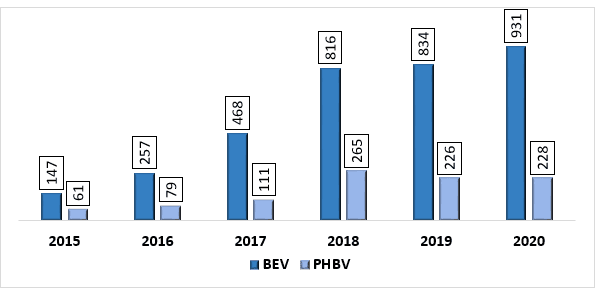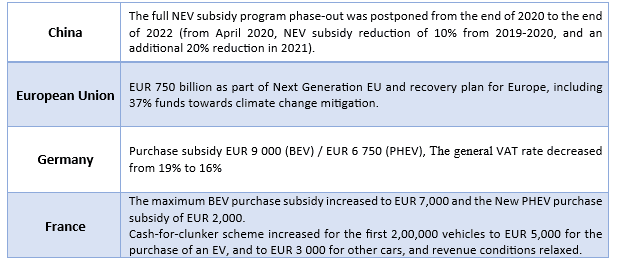- Home
- About Us
- Industry
- Services
- Reading
- Contact Us
Lithium Ion and Lead Acid Battery Market Seen Soaring 17.3% Growth to Reach USD 435 Billion by 2030, Projects Univdatos Market Insights
Author: Vikas Kumar
November 24, 2023
A lithium-ion battery is a rechargeable type of battery commonly used in portable electronics and electric vehicles. It relies on the movement of lithium ions between positive and negative electrodes to generate electrical energy. On the other hand, a Lithium-Ion and lead-acid battery is a traditional rechargeable battery that employs lead dioxide as the positive electrode and sponge lead as the negative electrode. These batteries are commonly used in automotive applications and uninterruptible power supplies (UPS). The lithium-ion battery market has experienced rapid growth due to its high energy density, lightweight design, and suitability for various applications, such as smartphones, laptops, electric vehicles, and renewable energy storage systems. This growth is fuelled by increasing demand for portable electronics and the global shift toward cleaner transportation options. However, safety concerns and supply chain challenges related to lithium-ion batteries have also been points of consideration.
Access sample report (including graphs, charts, and figures): https://univdatos.com/get-a-free-sample-form-php/?product_id=46547
Meanwhile, the lead-acid battery market growth has been more moderate, primarily driven by its established presence in automotive applications and its reliability in delivering a consistent power supply. Despite being bulkier and heavier than lithium-ion batteries, lead-acid batteries are cost-effective and widely used in conventional vehicles, backup power systems, and industrial machinery. The growth of this market is influenced by factors such as automotive industry trends, industrial demand, and advancements in battery technology that enhance their efficiency and lifespan.
Fig1: Electric Car Registrations in China (in Thousands), 2015-2020

Recent Developments/Awareness Programs: – Several key players and governments are rapidly adopting strategic alliances, such as partnerships, or awareness programs for the treatment: –
• On February 13, 2023, Toyota Is Finally Accelerating BEV Development Specifically, next-generation BEVs for the Lexus brand by 2026.
• On 27 January 2023, Maruti announced to launch of six battery electric vehicles in India by 2030.
• On March 13, 2023, Toyota launched the new Prius PHEV in Japan.
• On April 27, 2023, the new Exeed LX SUV was officially launched in China with a total of 5 models, available in ICE and PHEV versions, with a price range of 109,900 – 162,800 RMB (15,800 – 23,500 USD).
• On 26 April 2023, Maruti Suzuki India Ltd. (MSIL) revealed that it is all set to launch a brand-new 7-seat hybrid SUV in the Indian market in the next two months. It has also been confirmed that the premium SUV will use Toyota’s strong hybrid system.
• German luxury carmaker Mercedes has announced the Indian debut of the AMG GT G3 S E Performance on April 11, 2023. The AMG GT 63 S E Performance is a hybrid model combining a gasoline engine and electric motor.
There are some policies announced as a response to the Covid-19 crisis:-

Click here to view the Report Description & TOC https://univdatos.com/report/lithium-ion-and-lead-acid-batteries-market/
Conclusion
The battery market has undergone significant transformation in recent years, driven by technological advancements, environmental concerns, and government initiatives. The rise of lithium-ion batteries has revolutionized portable electronics, electric vehicles, and renewable energy storage systems. Their high energy density and lightweight design have propelled them to the forefront of modern energy solutions. Conversely , traditional and less energy-dense lead-acid batteries maintain their relevance in automotive and industrial applications due to their cost-effectiveness and reliability. Furthermore, China and the U.S., as global leaders in technology and innovation, have spearheaded remarkable government initiatives to bolster the battery market. China’s “Made in China 2025” and New Energy Vehicle Subsidy Program reflects its commitment to becoming a manufacturing powerhouse and advancing its battery technology sector. In the United States, programs like the ATVM Loan Program and battery research investments demonstrate a dedication to fostering cutting-edge battery technologies and supporting the growth of electric mobility.
As the world shifts towards a more sustainable energy landscape, these initiatives underscore the pivotal role that battery technologies play in shaping a cleaner and greener future. The ongoing efforts to improve battery efficiency, safety, and affordability will continue to pave the way for even more innovative breakthroughs in the battery market. With both established and emerging players vying for leadership, the battery industry stands on the precipice of transformative change, promising to revolutionize the way we power our lives and our planet.
Get a Callback
